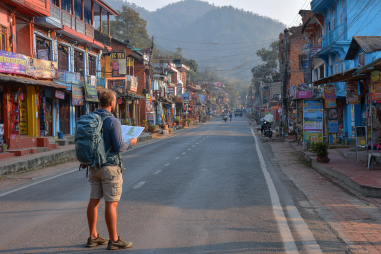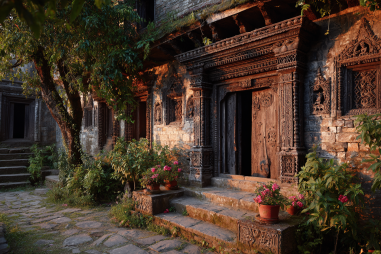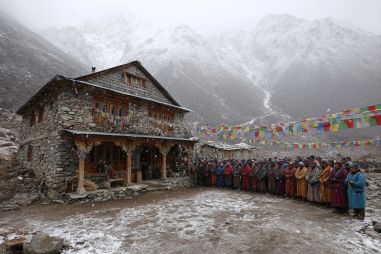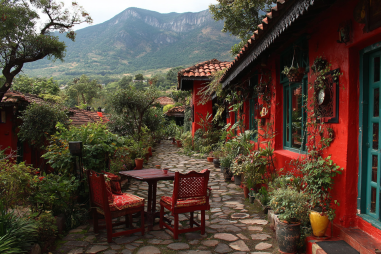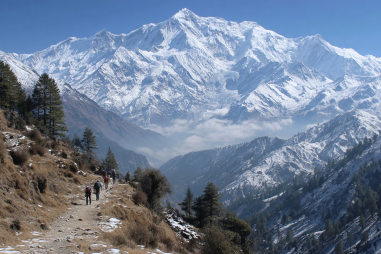Trekking from Lukla, the gateway to some of Nepal’s most breathtaking trails, demands careful preparation and the right equipment. Whether you’re heading toward Everest Base Camp or exploring other rugged routes in the region, packing appropriately ensures your safety, comfort, and enjoyment on the trail. This ultimate Lukla trekking equipment checklist breaks down everything you need—from essential gear to nuanced packing tips—so you can focus on the adventure ahead without worrying about what’s in your bag.
Essential Trekking Gear for Lukla Routes
The first step in preparing for your trek from Lukla is to gather essential trekking gear that will serve you well in varying conditions and terrain. A sturdy, comfortable backpack is crucial. Choose one with a capacity of around 40-50 liters; this size allows room for all your essentials without being too bulky or heavy. Look for padded shoulder straps, a hip belt, and adjustable compartments to balance the load efficiently.
A reliable sleeping bag rated for low temperatures (ideally around -10°C or lower) is necessary, especially if you’re trekking during colder months or at higher altitudes. Many lodges provide bedding, but bringing your own sleeping bag guarantees warmth and hygiene. Headlamps or flashlights with extra batteries are indispensable for early starts or nighttime situations.
Clothing Suited for Varying Weather
Lukla trekking involves fluctuating weather patterns, from warm sunny mornings to chilly evenings and occasional rain showers. Layering is the key to adapting to these changes without overpacking. Start with moisture-wicking base layers to keep sweat away from your skin. Lightweight thermal tops and bottoms are perfect for insulating on cold days.
Adding a fleece or insulated jacket provides warmth during chilly mornings or nights. On top of that, a waterproof and windproof outer shell jacket is essential to protect against rain and gusty winds often encountered on the trail. Quick-drying trekking pants and shorts can help with flexibility and comfort. Don’t forget sun protection items such as a wide-brimmed hat, sunglasses with UV protection, and high SPF sunscreen to guard against the intense mountain sun.
Footwear and Accessories
Your feet will carry you through the entire trek, so investing in sturdy, well-broken-in trekking boots with ankle support and gripping soles is vital. A pair of lightweight camp shoes or sandals can provide comfort after a long day of walking. Bring several pairs of moisture-wicking trekking socks (preferably wool or synthetic blends) to prevent blisters and keep your feet dry.
Other useful accessories include trekking poles to reduce strain on your knees during ascents and descents, a good-quality water bottle or hydration system to stay hydrated, and gloves or mittens for warmth. A buff or neck gaiter can protect your face from sun, wind, and dust.
Safety and Navigation Equipment
Even though Lukla trails are quite popular and well-marked, safety should never be compromised. Carry a detailed map and a compass as backups to electronic devices, which can sometimes fail or lose signal. A GPS device or a smartphone with offline mapping apps can also prove helpful for navigation.
Personal safety equipment such as a whistle, reflective vest, and a small multi-tool can make a difference during emergencies. Carrying a basic trekking first aid kit, including blister treatments, antiseptic wipes, and painkillers, will help you manage minor injuries promptly. Always inform someone of your trekking plan and estimated return for added security.
Health and Emergency Supplies
Altitude sickness is a genuine concern in the Lukla region, so it’s wise to bring medications like acetazolamide (Diamox) after consulting your doctor. Pack essentials such as rehydration salts, electrolyte tablets, and vitamins to support your body through the demands of high-altitude trekking.
Sanitation items like hand sanitizer, biodegradable wet wipes, and toilet paper are often overlooked but vital for comfort and hygiene along the trail. A water purification method—tablets, drops, or a portable filter—is indispensable to ensure safe drinking water during the trek.
Packing Tips for Efficiency
Packing smartly can make a huge difference in your trekking experience. Opt for lightweight, quick-drying clothing to minimize weight and maximize flexibility. Roll clothes tightly instead of folding to save space and reduce wrinkles. Use packing cubes or compression sacks to organize and compact your gear efficiently.
Try to distribute weight evenly in your backpack, placing heavier items closer to your back for balance. Keep frequently used items like your camera, snacks, water bottle, and rain jacket easily accessible in top or side pockets. Avoid overpacking; remember that many items can be rented or bought locally, reducing the need to carry everything from home.
Renting vs. Buying Equipment
Many trekkers wonder whether to rent or buy trekking gear for their Lukla adventure. Renting can be a budget-friendly and convenient option, especially for bulky or costly items like sleeping bags, trekking poles, and down jackets. Local shops in Kathmandu and Lukla offer rental services with decent quality gear, often saving you the hassle of carrying extra weight on your flight to Lukla.
Buying is a better choice if you plan to trek multiple times or want gear tailored exactly to your preferences and fit. Personal items such as hiking boots, base layers, and backpacks should ideally be your own since they require adequate breaking-in and fitting for comfort. Whichever you choose, inspect rented gear carefully for wear and functionality before setting off.
Caring for Your Gear on Trek
Maintaining your trekking equipment during the journey helps extend its longevity and keeps you prepared for the entire trip. Dry your boots and clothes each evening by removing damp liners and airing them out in the sunshine or near a fire. Regularly clean your water bottles and hydration bladders to prevent bacterial growth.
Protect electronic devices from moisture and dust with waterproof cases or dry bags. If you notice signs of wear or damage, address them quickly—use duct tape for temporary gear repairs or seek local repair services if available. Finally, be mindful of your gear’s environmental impact by disposing of waste properly and avoiding unnecessary damage to the natural surroundings.
Ready for Your Lukla Adventure
With the right preparation and carefully chosen equipment, your trek from Lukla can be a memorable and fulfilling experience. Use this checklist as your guide to pack both smart and light, ensuring you stay comfortable and safe throughout the journey. Remember, the mountains will test your resilience, but the right gear will support you every step of the way—letting you focus on soaking in the breathtaking views and the incredible adventure ahead.


